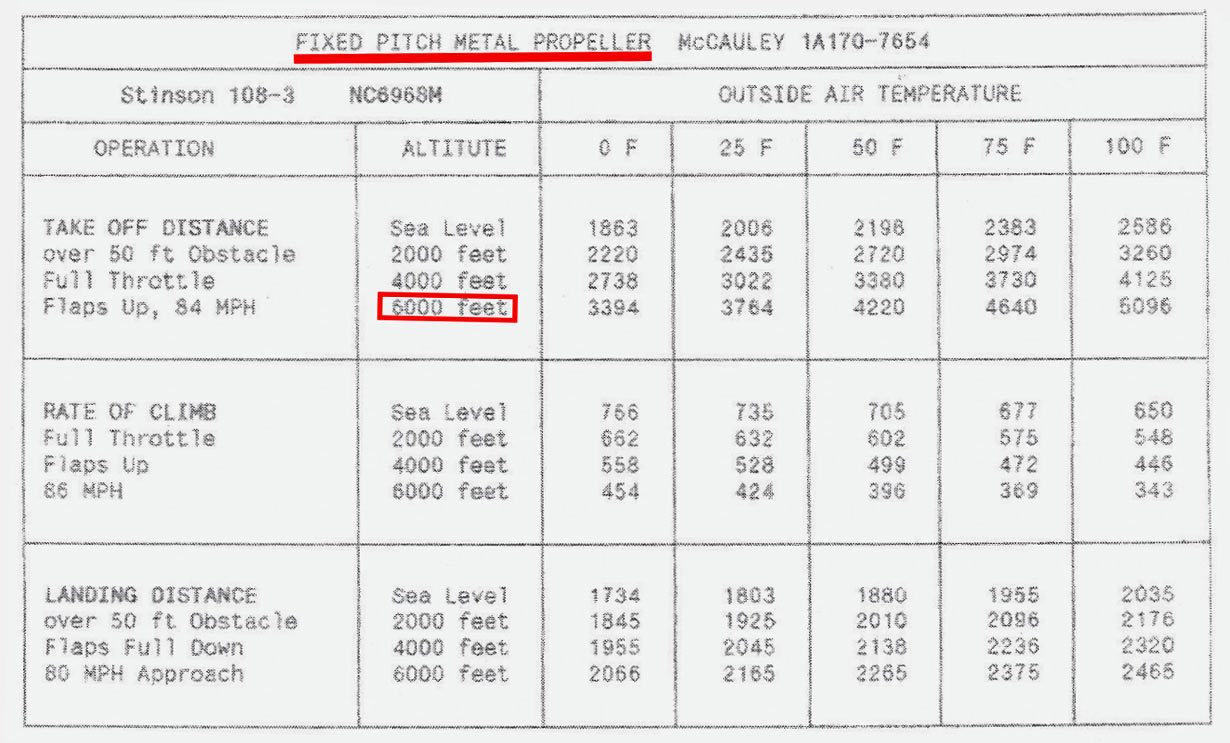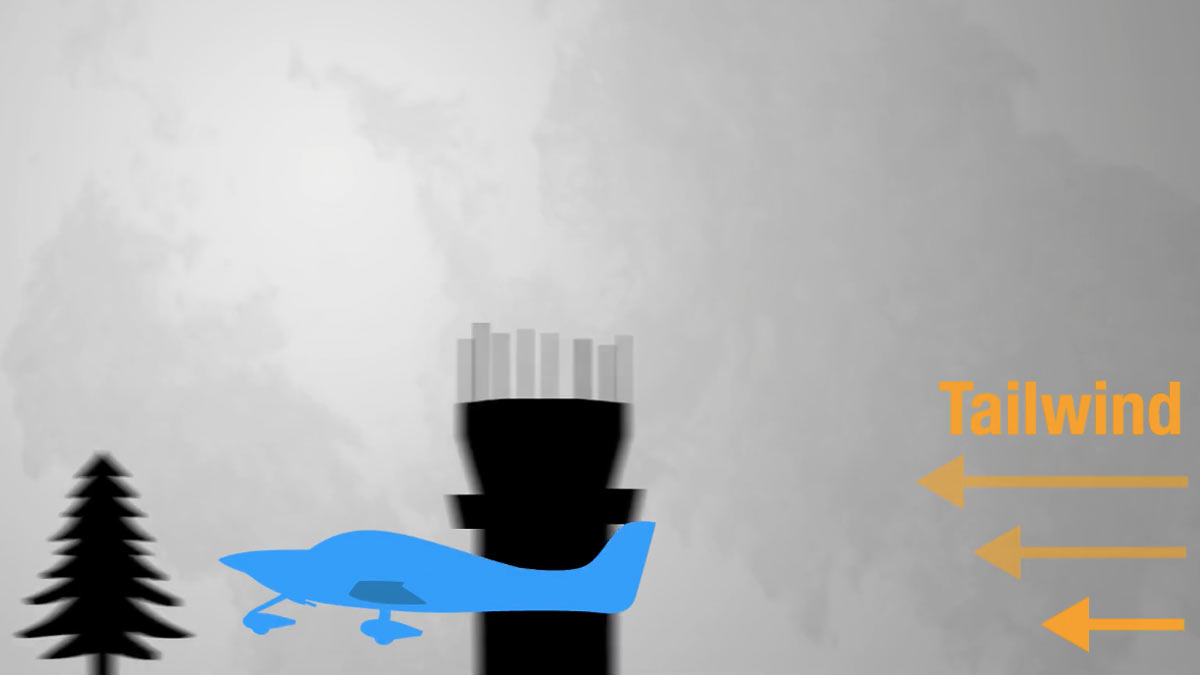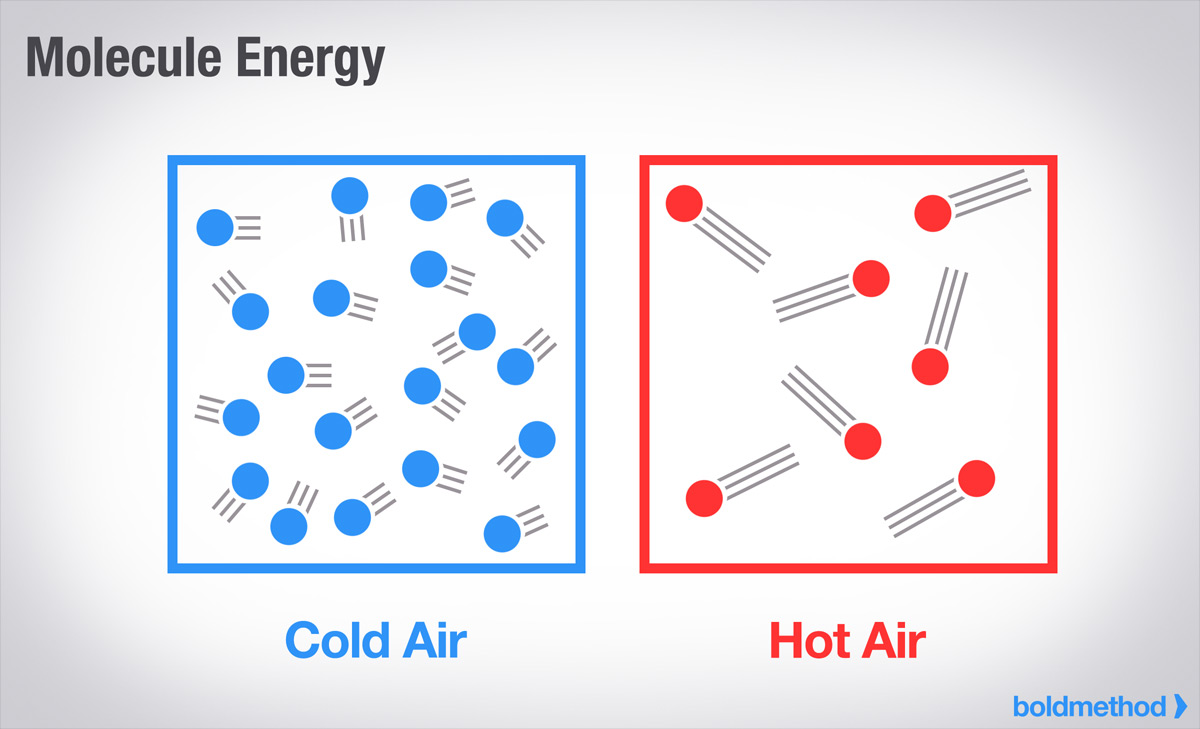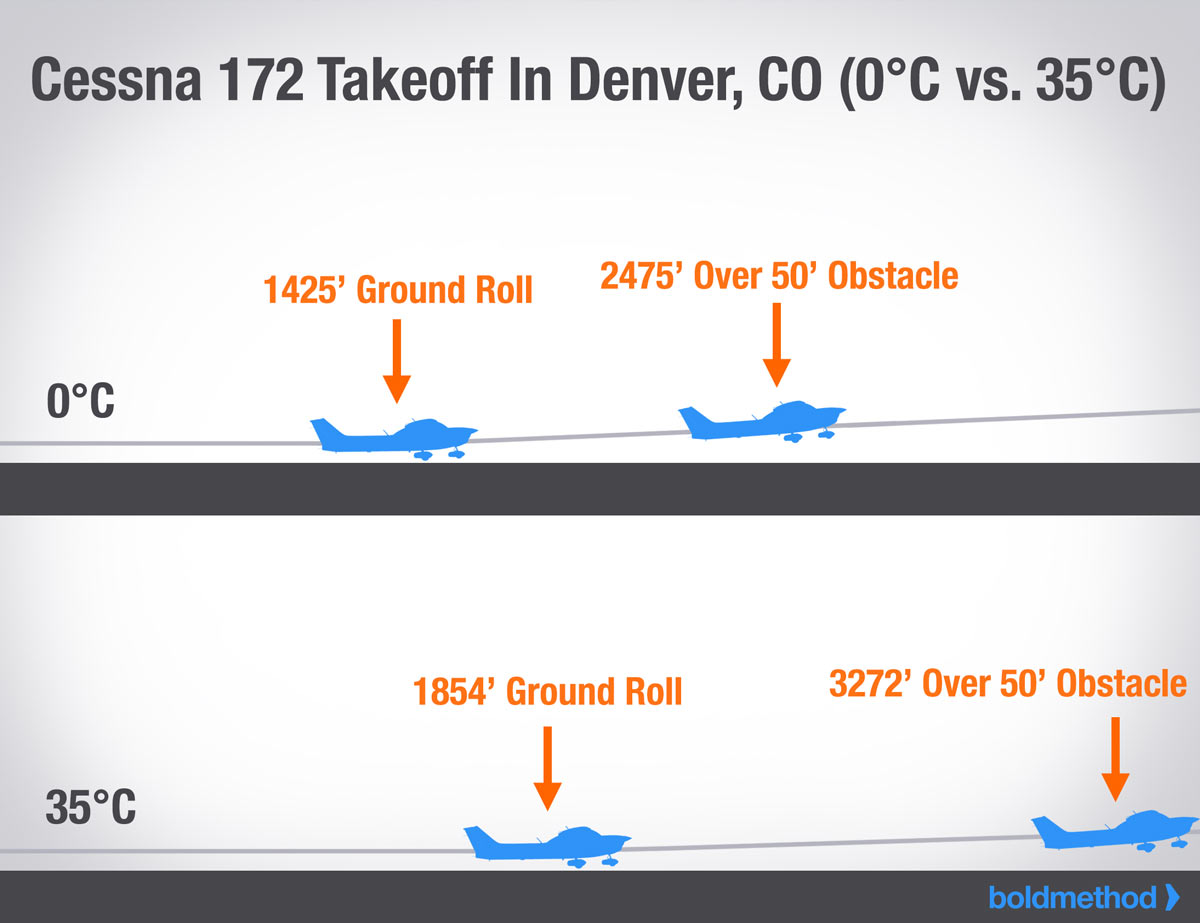If you're like us, you're not too interested in going off the end of the runway on takeoff. So as the weather starts to heat up this spring, make sure you're calculating takeoff distance before every flight.
The following accident demonstrates exactly what can go wrong when you don't use a takeoff distance chart properly.
The Consequences Of Poor Planning
On June 30th, 2012 a pilot flying a Stinson 108 crashed shortly after takeoff from the Bruce Meadow's Airport (U63), Idaho. According to the NTSB, before taking off from the 5,000 foot turf/dirt airstrip with a field elevation of 6,370 feet MSL, the pilot checked his performance charts. He calculated that the density altitude was about 9,200 feet.
Based on the takeoff chart, the maximum field elevation for calculating takeoff is 6,000', 370 feet lower than the actual field elevation. While you can't extrapolate a chart for performance calculations, it's clear the pilot needed nearly all of the 5,000' runway for takeoff in a no-wind situation (it was 81 degrees at the time).
 Worse yet, the pilot also noted that at the time of departure, the wind was from 030 degrees at 10 knots, with gusts to 20 knots. This was a nearly direct tailwind for the takeoff from runway 23. In most light aircraft, takeoff distance increases by 10% for each 2 knots of tailwind. The takeoff run for this departure direction would have taken approximately 50% more distance with a sustained 10 knot tailwind. And that doesn't take gust factor into consideration. (Learn how tailwinds affect takeoff performance.)
Worse yet, the pilot also noted that at the time of departure, the wind was from 030 degrees at 10 knots, with gusts to 20 knots. This was a nearly direct tailwind for the takeoff from runway 23. In most light aircraft, takeoff distance increases by 10% for each 2 knots of tailwind. The takeoff run for this departure direction would have taken approximately 50% more distance with a sustained 10 knot tailwind. And that doesn't take gust factor into consideration. (Learn how tailwinds affect takeoff performance.) 
As you saw in the video, "when the airplane was about three-quarters of the way down the runway during the takeoff roll and not yet airborne, the pilot was about to abort the takeoff, but a gust of wind lifted the airplane in the air. The pilot thought the airplane would remain airborne, but when he could not get the airplane to climb as expected, he attempted to locate an open field to land in. However, the airplane subsequently encountered a downdraft, collided with a stand of trees, and came to rest inverted about 1.64 nautical miles from the departure end of the runway" (NTSB).

NTSB
NTSB Probable Cause: The pilot's inadequate preflight planning and decision to takeoff at a density altitude outside of the airplane's takeoff performance envelope, with a tailwind, and near the airplane's maximum gross weight, which resulted in the airplane's inability to climb and clear trees.
What You Need To Know About Density Altitude
Density altitude is a measure of how 'thick' the air is, and it's based on three factors: atmospheric pressure, temperature, and humidity.

The technical definition of density altitude is "pressure altitude, adjusted for non-standard temperature." What that really means is on hot days, the air is much 'thinner,' or less dense, than it is on cold days. (Learn more about density altitude here.)

What this all comes down to is a major performance penalty for your plane on hot days, and when the atmospheric pressure is low. Just look at the difference in takeoff distance on a hot day in Denver versus a cold one in a Cessna 172. Takeoff roll is increased by 30%. And clearing a 50' obstacle? It's an increase of 32% Those numbers can make a big difference, especially on a short runway.

Know Your Airplane's Limits
Manufacturers establish performance envelopes for a reason. While the Stinson POH doesn't list a "maximum altitude for takeoff," by flying outside of the altitudes found in his takeoff chart, the PIC in this accident essentially became a test pilot. There was no way for him to verify performance before he began his takeoff roll, but with even some basic estimates, it was clear he didn't have the performance to take off.
While we don't know the pilot's exact decision making process, the tailwind, hot temperature, high field elevation should've been red flags. Avoiding an accident like this is simple. Calculate your takeoff distance every time, and don't fly outside of your aircraft's limits.
|
Article written by Swayne Martin 03/21/2017
COURTESY OF BOLDMETHOD.COM |

